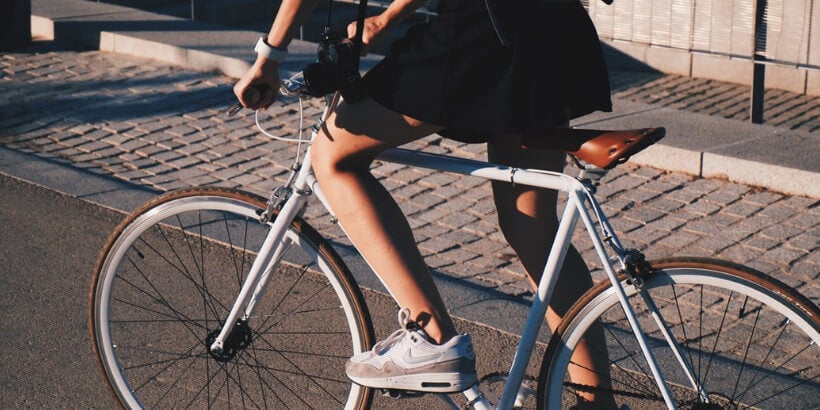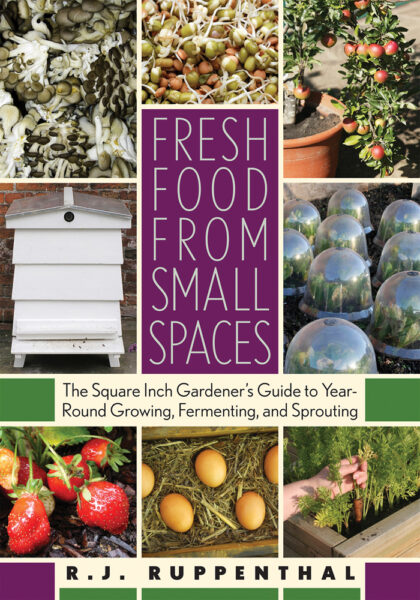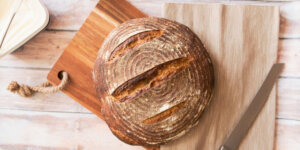5 Things You’ll Need to Get Back on Your Bike: Spring Is (Almost) Here!

It’s mud season in Vermont—also known as late winter/early spring in other parts of these here United States—but spring is just around the corner. That’s the thought that keeps getting me out of bed every morning.
It’s time to get the ol’ bike out of mothballs, grease up your chain, fill up your tires, and start getting ready for those leisurely (or exciting, depending on where your commute takes you) trips to work. Biking keeps you healthy, saves you money, and it means a less polluted journey. But wait: before you even start thinking about biking to work, there are a few things you’ll need.
In no particular order, except descending order of importance, here are the five things you’ll need to get back on your bike and start riding to work.
The following is an excerpt from Biking to Work by Rory McMullen. It has been adapted for the Web.
Helmet
There is some debate about the pros and cons of wearing a helmet (there is no legal requirement to do so in this country); but if you land on your head it could save you from brain damage. When buying a helmet make sure you get the right size, and fit it correctly. Buy the smallest helmet that is comfortable, to ensure it fits tightly on your head. Tighten the straps so that they feel tight when you have your mouth open. When trying your helmet on, remember that it is worn on top of the head, not tipped back. By law, if you ride in the dark you must have front, rear, wheel, and pedal reflectors, which should come standard on a new bike; in some places you also need a white front and a red rear light. Biking at night without lights is not only dangerous, it could cost you a fine in some cities.
Locks
No matter where you lock it, what lock you use, or how old and battered your bike looks, there is a chance that you will have your bike stolen. When locking your bike outside you should remember to also protect your wheels and seat post; quick-release bolts make adjusting the seat height or taking the wheels off very easy, but also offer easy pickings. A good bike lock is essential if you are going to leave your bike outside unattended; a modern-looking bike is more likely to be stolen than an old one. Thieves will take anything, so you should definitely buy a lock when you buy the bike, even if it is an old secondhand relic. Almost any lock can be broken by a professional thief, but as most bikes are stolen by opportunists using garage tools, the stronger the lock the less likely it is that your bike will be stolen.
Luggage Carrier (messenger bag or panniers)
Backpacks will make your back sweat, so are not ideal when you are wearing your work clothes. Courier bags are good for carrying both your laptop and work clothes if you don’t have panniers. One single-side pannier offers plenty of space to cram in most things you could want at work, and you can get fully waterproof designs, pannier covers, or waterproof inserts to keep your clothes dry if it rains.
Gloves
Your hands need protection. They will feel very cold in the winter, and if you fall off your bike and you are not wearing gloves you will definitely hurt your hands. There are gloves on the market with all sorts of gels and padding to absorb road vibrations, but any set of gloves is better than none. Remember that you still need good grip and control when you buy your winter gloves.
Waterproof gear
Without mudguards, the spray from your wheels on a wet road will splash all over you. Rainproof ponchos or cycle capes are the traditional way to ride in the rain and are great value, very efficient, and ideal if you get caught in the rain. They don’t perform well in wind, however, so if you want to speed to work in all weather, breathable, lightweight waterproof jackets and pants are best.
Good riding!
Recommended Reads
All In the Question: What If We Started Asking Better Questions?
Recent Articles
Introducing…your new favorite brunch dish! This whole broccoli frittata is packed with fresh, wildcrafted flavors that are bound to help you start your day off on the right foot. The following is an excerpt from The Forager Chef’s Book of Flora by Alan Bergo. It has been adapted for the web. RECIPE: Whole Broccoli Frittata…
Read MoreWondering where to forage for greens this spring? Look no further than hedges, which serve as natural havens for wild greens and herbs! The following is an excerpt from Hedgelands by Christopher Hart. It has been adapted for the web. Food from Hedges: Salads and Greens Let’s start by looking at all the wild foods…
Read MoreThere’s a whole new world out there when it comes to koji. It doesn’t matter if you’re making bread, cheese, or ice cream, koji helps you pump up the flavor! Growing Koji in Your Own Kitchen Koji, the microbe behind the delicious, umami flavors of soy sauce, miso, fermented bean sauce, and so many of…
Read MoreWhether you’re looking to replace your end-of-the-day cocktail, relax before bed, or want something new to add to your tea, this non-alcoholic mocktail syrup base will do the trick. Delicious and all-natural, take a sip of this nightcap mocktail and feel your troubles melt away. The following is an excerpt from Herbal Formularies for Health…
Read MoreWant to enjoy bread without worrying about gluten? With Einkorn bread, a light bread with the lowest glycemic index, you can still enjoy all of the delights of bread. without any of the allergic reactions! The following is an excerpt from Restoring Heritage Grains by Eli Rogosa. It has been adapted for the web. Einkorn…
Read More








